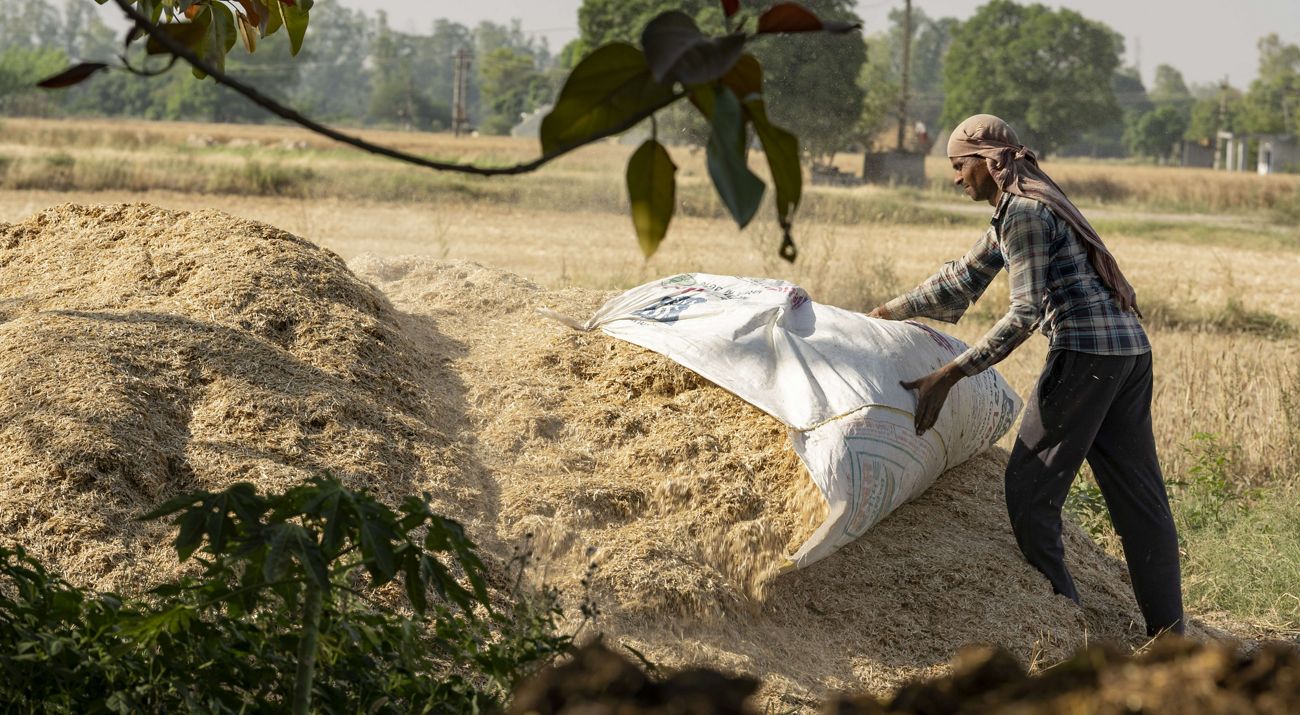
Charcoal for Climate Action? New Study Advances Potential of Biochar from Crop Residues as a Climate Solution
Media Contacts
-
The Nature Conservancy
Email: media@tnc.org
A collaboration between researchers at the Swedish University of Agricultural Sciences, The Nature Conservancy, Cornell University and Yale School of the Environment has resulted in a new best-in-class set of data that would facilitate the broadscale uptake of biochar—a type of charcoal made by heating leftover organic materials such as crop residues—as a climate solution.
Biochar has long been used in an agricultural setting for its ability to improve soil health and enhance plant growth. Research has also found that biochar offers a promising solution for removing CO2 from the atmosphere. When biochar is added to soils, carbon can be stored in the soil for centuries and possibly millennia.
“We are entering an unprecedented era in which even a rapid and profound reduction in fossil fuel use will not be enough to avoid severe harms to both humans and ecosystems from climate change,” said Dominic Woolf, one of the study’s lead authors. “We also need to draw down excess CO2. Making biochar from crop residues is one of the few tools we have that can do this at scale without competing for land.”
The new study, published this week in the sustainable energy journal GCB Bioenergy, highlights 12 countries that have the potential to sequester more than one-fifth of their current emissions as biochar from crop residues, with Bhutan (68%) and India (53%) having the largest potentials.
Biochar's untapped potential stems from limited awareness, data gaps, technical hurdles, market barriers, perceived risks and infrastructure limitations,” said Shivesh Kishore Karan, a researcher at the Swedish University of Agricultural Sciences and joint lead author on the paper. “Our research, while not providing a complete plan, contributes a crucial puzzle piece by furnishing a detailed, spatially explicit dataset on crop residue production and biochar carbon sequestration, offering insights into biochar’s potential.”
The resulting paper, made available via open access, offers a new best-in-class data product that can be used in carbon assessments for biochar across a variety of settings, including accounting for Nationally Determined Contributions (NDCs) or corporate value chains.
This collaboration produced comprehensive high-resolution global data on crop residue production, unveiling a staggering figure of 2.4 billion metric tons of carbon generated annually. If all crop residues generated by agriculture globally were utilized for biochar production, the theoretical potential could reach a maximum of one billion metric tons of carbon stored per year—equivalent to all emissions from the world's crop production.
Even considering limitations on sustainable residue harvesting or competing uses such as livestock feed, the global biochar production potential still amounts to 510 million metric tons of carbon per year, with 360 million metric tons per year remaining sequestered after a century.
“This new analysis does not solve all of the barriers of biochar as a natural climate solution, like developing an economically sustainable biochar product,” said Stephen Wood, senior scientist, agriculture and food at The Nature Conservancy and co-author of the paper. “But it gives us greater insight into where crop residues can be sustainably used to produce biochar locally. This can be especially important in places where crop residues are currently wasted, like through burning, which can increase the risk of respiratory disease.”
In the fight against climate change, natural climate solutions (NCS)—a range of nature-based actions aimed at protecting, managing and restoring nature to reduce greenhouse gas emissions and store carbon—have emerged as powerful and cost-effective ways to combat the climate crisis while also promoting thriving communities and ecosystems.
The authors hope the high-resolution maps of crop residue production and biochar carbon storage potential provided by this study will offer valuable insights to the scientific community and agriculture industry and support decision-making and investment related to biochar production.
The full study is available here.
Karan S.K., Woolf D., Azzi E.S., Sundberg C., Wood S.A. Potential for biochar carbon sequestration from crop residues: A global spatially explicit assessment. GCB Bioenergy
The Nature Conservancy is a global conservation organization dedicated to conserving the lands and waters on which all life depends. Guided by science, we create innovative, on-the-ground solutions to our world’s toughest challenges so that nature and people can thrive together. We are tackling climate change, conserving lands, waters and oceans at an unprecedented scale, providing food and water sustainably and helping make cities more resilient. The Nature Conservancy is working to make a lasting difference around the world in 81 countries and territories (40 by direct conservation impact and 41 through partners) through a collaborative approach that engages local communities, governments, the private sector, and other partners. To learn more, visit nature.org or follow @nature_press on X.